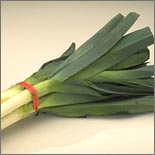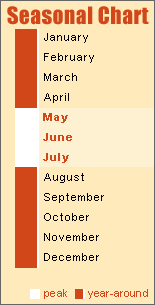|
|
 |
 First First
 Previous
2 of 2
Next Previous
2 of 2
Next Last
Last
|
 |
Reply
 | |
<STYLE> .menuskin{ position:absolute; width:160px; background-color:#336633; border:2px solid green; font:normal 12px Arial; line-height:12px; z-index:100; visibility:hidden; } .menuskin a{ text-decoration:none; color:white; padding-left:10px; padding-right:10px; } #mouseoverstyle{ background-color:#669966; } #mouseoverstyle a{ color:white; } --> </STYLE> language=JavaScript1.2> //Pop-it menu- By Dynamic Drive //For full source code and more DHTML scripts, visit http://www.dynamicdrive.com //This credit MUST stay intact for use var linkset=new Array() //SPECIFY MENU SETS AND THEIR LINKS. FOLLOW SYNTAX LAID OUT linkset[0]=' Safeway ' linkset[0]+=' ' linkset[0]+=' ' linkset[0]+=' ' linkset[0]+=' ' linkset[0]+=' ' linkset[0]+=' ' linkset[0]+=' ' linkset[0]+=' Vons ' linkset[0]+=' ' linkset[0]+=' ' linkset[0]+=' Genuardis ' linkset[0]+=' ' linkset[0]+=' Dominicks ' linkset[0]+=' ' linkset[0]+=' Randalls ' linkset[0]+=' ' linkset[0]+=' Tom Thumb ' linkset[0]+=' ' linkset[0]+=' Carrs ' linkset[0]+=' ' linkset[1]=' ' linkset[1]+=' ' ////No need to edit beyond here var ie4=document.all&&navigator.userAgent.indexOf("Opera")==-1 var ns6=document.getElementById&&!document.all var ns4=document.layers function showmenu(e,which){ if (!document.all&&!document.getElementById&&!document.layers) return clearhidemenu() menuobj=ie4? document.all.popmenu : ns6? document.getElementById("popmenu") : ns4? document.popmenu : "" menuobj.thestyle=(ie4||ns6)? menuobj.style : menuobj if (ie4||ns6) menuobj.innerHTML=which else{ menuobj.document.write('<layer name=gui bgColor=#E6E6E6 width=165 onmouseover="clearhidemenu()" onmouseout="hidemenu()">'+which+'</layer>') menuobj.document.close() } menuobj.contentwidth=(ie4||ns6)? menuobj.offsetWidth : menuobj.document.gui.document.width menuobj.contentheight=(ie4||ns6)? menuobj.offsetHeight : menuobj.document.gui.document.height eventX=ie4? event.clientX : ns6? e.clientX : e.x eventY=ie4? event.clientY : ns6? e.clientY : e.y //Find out how close the mouse is to the corner of the window var rightedge=ie4? document.body.clientWidth-eventX : window.innerWidth-eventX var bottomedge=ie4? document.body.clientHeight-eventY : window.innerHeight-eventY //if the horizontal distance isn't enough to accomodate the width of the context menu if (rightedge<menuobj.contentwidth) //move the horizontal position of the menu to the left by it's width menuobj.thestyle.left=ie4? document.body.scrollLeft+eventX-menuobj.contentwidth : ns6? window.pageXOffset+eventX-menuobj.contentwidth : eventX-menuobj.contentwidth else //position the horizontal position of the menu where the mouse was clicked menuobj.thestyle.left=ie4? document.body.scrollLeft+eventX : ns6? window.pageXOffset+eventX : eventX //same concept with the vertical position if (bottomedge<menuobj.contentheight) menuobj.thestyle.top=ie4? document.body.scrollTop+eventY-menuobj.contentheight : ns6? window.pageYOffset+eventY-menuobj.contentheight : eventY-menuobj.contentheight else menuobj.thestyle.top=ie4? document.body.scrollTop+event.clientY : ns6? window.pageYOffset+eventY : eventY menuobj.thestyle.visibility="visible" return false } function contains_ns6(a, b) { //Determines if 1 element in contained in another- by Brainjar.com while (b.parentNode) if ((b = b.parentNode) == a) return true; return false; } function hidemenu(){ if (window.menuobj) menuobj.thestyle.visibility=(ie4||ns6)? "hidden" : "hide" } function dynamichide(e){ if (ie4&&!menuobj.contains(e.toElement)) hidemenu() else if (ns6&&e.currentTarget!= e.relatedTarget&& !contains_ns6(e.currentTarget, e.relatedTarget)) hidemenu() } function delayhidemenu(){ if (ie4||ns6||ns4) delayhide=setTimeout("hidemenu()",500) } function clearhidemenu(){ if (window.delayhide) clearTimeout(delayhide) } function highlightmenu(e,state){ if (document.all) source_el=event.srcElement else if (document.getElementById) source_el=e.target if (source_el.className=="menuitems"){ source_el.id=(state=="on")? "mouseoverstyle" : "" } else{ while(source_el.id!="popmenu"){ source_el=document.getElementById? source_el.parentNode : source_el.parentElement if (source_el.className=="menuitems"){ source_el.id=(state=="on")? "mouseoverstyle" : "" } } } } if (ie4||ns6) document.onclick=hidemenu </SCRIPT> language=JavaScript> /* You may give each page an identifying name, server, and channel on the next lines. */ var pageName = "Greenonions"; /**** DO NOT ALTER ANYTHING BELOW THIS LINE! ****/ var code = ' '; </SCRIPT> src="http://code.superstats.com/code/ss/jbfarrell/0/30b"> </SCRIPT> language=JavaScript> br = navigator.appName + parseInt(navigator.appVersion); if (code != ' ' || br == 'Netscape2') document.write(code); else document.write('<a' + ' href="http://stats.superstats.com/c/ss/jbfarrell" target="_top"><img' + ' src="http://stats.superstats.com/b/ss/jbfarrell/1' + '?pageName=' + escape(pageName) + '" border=0>'); document.write('<'); document.write('!-- '); </SCRIPT>
 |
 Green onions and scallions are just immature onions that are pulled from the ground before a prominent bulb has formed and their tops are still green. Scallions are considered younger than a green onion because they should not have a bulb, while green onions should have a miniature bulb. Both the bulb and bright green tops are edible, and are sold in bunches. Recipes will call for using either just the white part, or both the white and green part of the green onion or scallion. Generally, the white part is cooked, and the green part is used as a garnish or in cold preparations. In a pinch you can substitute the green part for chives. Shallots look like small onions, and are cased in a papery skin that is usually rust colored (the American variety) but sometimes a bluish, gray (the French variety.) Shallots sometimes come in clusters with two or three bulbs or cloves attached. (If a recipe calls for one shallot, it usually means just one of these cloves.) Many recipes suggest that when shallots can't be found, you can substitute scallions. (Scallions are sometimes called shallots in some places.) Shallots have a more assertive flavor than scallions, which may the reason chefs prefer them, and why they are used raw. Shallots don't have the tearing effect on the eyes that onions have. Creaming onions are scallions that are allowed to grow a little longer to form a more substantial white bulb. They are also called a green onion (which can be confusing,) and because they have matured longer, these onions are somewhat hotter than scallions. Like scallions, they are sold in bunches. Leeks look like overgrown scallions, but a single leek can be as thick as a bunch of scallions, and there are times when a leek can be almost as thin as a scallion. Leeks have a crunchy texture when cooked, and a heartier flavor than scallions. They are used mostly in cooking, particularly in soups and stews as a vegetable, and are very often braised or served a` la Grecque. Green onions and scallions are just immature onions that are pulled from the ground before a prominent bulb has formed and their tops are still green. Scallions are considered younger than a green onion because they should not have a bulb, while green onions should have a miniature bulb. Both the bulb and bright green tops are edible, and are sold in bunches. Recipes will call for using either just the white part, or both the white and green part of the green onion or scallion. Generally, the white part is cooked, and the green part is used as a garnish or in cold preparations. In a pinch you can substitute the green part for chives. Shallots look like small onions, and are cased in a papery skin that is usually rust colored (the American variety) but sometimes a bluish, gray (the French variety.) Shallots sometimes come in clusters with two or three bulbs or cloves attached. (If a recipe calls for one shallot, it usually means just one of these cloves.) Many recipes suggest that when shallots can't be found, you can substitute scallions. (Scallions are sometimes called shallots in some places.) Shallots have a more assertive flavor than scallions, which may the reason chefs prefer them, and why they are used raw. Shallots don't have the tearing effect on the eyes that onions have. Creaming onions are scallions that are allowed to grow a little longer to form a more substantial white bulb. They are also called a green onion (which can be confusing,) and because they have matured longer, these onions are somewhat hotter than scallions. Like scallions, they are sold in bunches. Leeks look like overgrown scallions, but a single leek can be as thick as a bunch of scallions, and there are times when a leek can be almost as thin as a scallion. Leeks have a crunchy texture when cooked, and a heartier flavor than scallions. They are used mostly in cooking, particularly in soups and stews as a vegetable, and are very often braised or served a` la Grecque.  Ramps are wild mountain leeks. They look like scallions although their stems taper to a slightly larger bulb and their leaves are wider. Ramps are gleaned by foragers from forests in the eastern United States and have a very short season much like local dandelions. Look for them from the end of March to early May. The most prolific suppliers when it comes to scallions are California and Mexico. Other producers include the states of Arizona, Texas, New Jersey, Ohio, Colorado, Illinois, and Washington. California, New Jersey, Michigan, and Virginia are the main growing areas for leeks. New York and New Jersey are the primary domestic suppliers of shallots, while France is the main importer. Storage & Selection Ramps are wild mountain leeks. They look like scallions although their stems taper to a slightly larger bulb and their leaves are wider. Ramps are gleaned by foragers from forests in the eastern United States and have a very short season much like local dandelions. Look for them from the end of March to early May. The most prolific suppliers when it comes to scallions are California and Mexico. Other producers include the states of Arizona, Texas, New Jersey, Ohio, Colorado, Illinois, and Washington. California, New Jersey, Michigan, and Virginia are the main growing areas for leeks. New York and New Jersey are the primary domestic suppliers of shallots, while France is the main importer. Storage & Selection
Green onions/scallions should have bright green tops and firm white bottoms. Scallions can occasionally show evidence of slime. Scallions like cool moist conditions, as low as 32° F with high humidity. Pick leeks with relatively straight bulbs that don't exceed 1½" in diameter, or they will be tough and woody. Never buy leeks that have wilted or torn green parts, or those that have been trimmed, as it is a good indication that the leeks have been around too long. Store green onions/scallions & leeks away from odor-sensitive foods such as corn and mushrooms, which will absorb the odor of the onions. Remove any rubber bands and any damaged leaves and store in plastic bags in the crisper section of the refrigerator. They'll both last up to five days. Shallots should be kept at room temperature, away from heat sources like stoves and heaters, and they will last several weeks this way. Preparation
Leeks are notoriously sandy and must be washed thoroughly. First trim off the root and green tops, and then slit the leeks lengthwise. Rinse off the dirt between the layers under a running tap or swish the leeks in a tub of water while holding it firmly so it doesn't fall apart. I like to separate the leaves in a flapping motion to make sure all the grit is removed. Leeks are usually cut crosswise into crescents before they are sautéed in butter or oil for a dish, but if they are to be roasted or braised, the two halves can be left intact.  Scallions are prepared like leeks, except dirt and grit are not an issue. Trim the roots and the green tops and leave about an inch of green where it's fairly light green. Then cut crosswise into thin slices or halve lengthwise and chop crosswise for smaller pieces. Shallots can be chopped like an onion, but since they are so small, a chef's knife can be a bit cumbersome. Instead, try using a razor-sharp paring knife, and follow the same procedure for dicing onions. Tony's Tip Scallions are prepared like leeks, except dirt and grit are not an issue. Trim the roots and the green tops and leave about an inch of green where it's fairly light green. Then cut crosswise into thin slices or halve lengthwise and chop crosswise for smaller pieces. Shallots can be chopped like an onion, but since they are so small, a chef's knife can be a bit cumbersome. Instead, try using a razor-sharp paring knife, and follow the same procedure for dicing onions. Tony's Tip
Soaking shallots in warm water helps to remove the peel. Tony's Favorite Recipe
Mango Scallions Sticky Rice Green Onions / Scallions Varieties
White Lisbon is the most widely grown variety. Crystal Wax, Eclipse, Spanish, White Sweet Spanish, Southport, White Globe, and White Portugal are other varieties available. Leek Varieties
American Flag (also called London Flag), Blue Leaf, Carentan (also called Winter), and Musselburg are the main varieties of leeks grown in the United States. They are sold in bunches of two, three, or four, depending on their size. Baby Leeks can be pencil-thin and are more tender than medium sized leeks.
| | |
|
|
|

 Free Forum Hosting
Free Forum Hosting